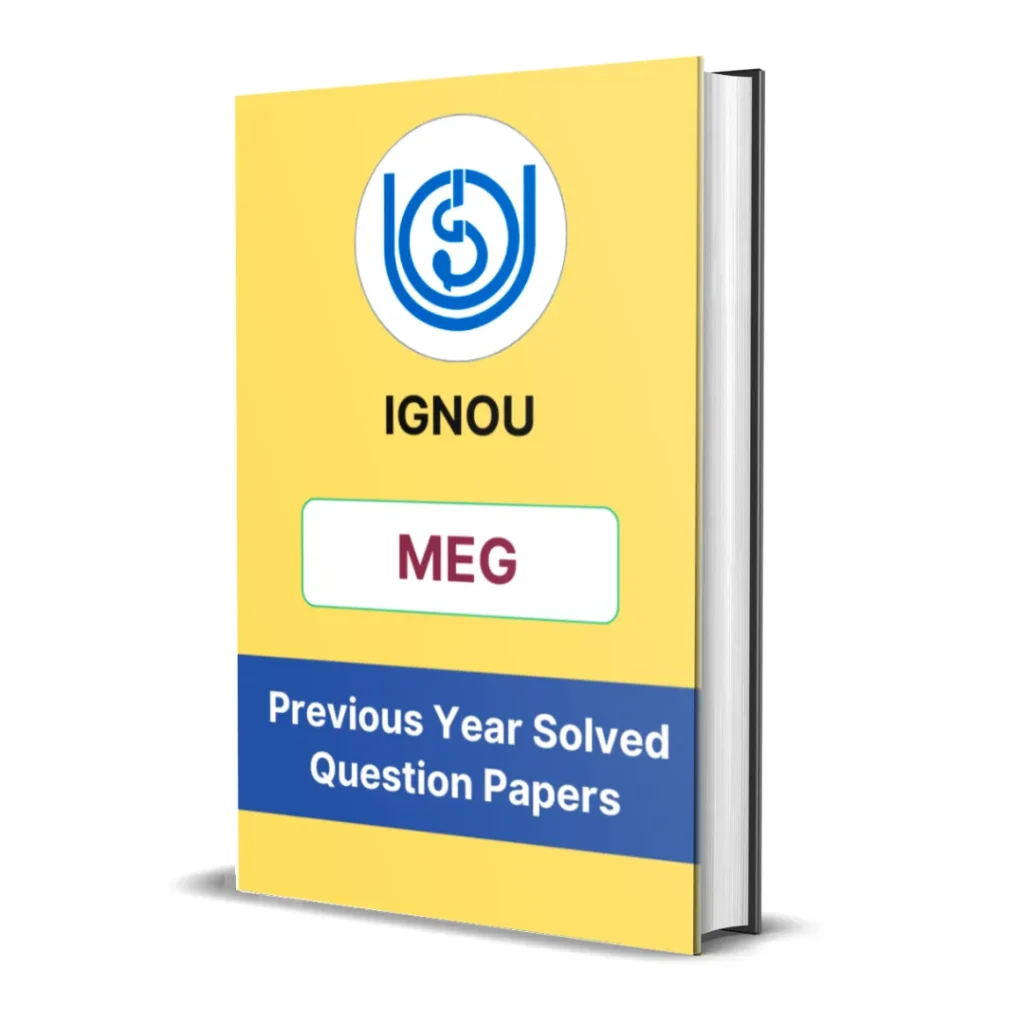IGNOU MEG-01 Block 9 Summary | The Modernist Poets
- Last Updated On August 12, 2025
Table of Contents
Here you will get the detailed summary of IGNOU MEG 1 Block 9 – The Modernist Poets.
We have provided the summary of all units starting from unit 42 to unit 47.
Unit 42: Modern British Poetry – An Introduction
This unit provides an overview of Modernism in British poetry, a movement that emerged in response to the disillusionment of the early 20th century, especially following World War I. Modernist poets rejected the ideals of the Romantic and Victorian periods, turning instead toward fragmentation, irony, and experimentation in form and content.
The unit highlights key features of modernist poetry:
-
Ambiguity and complexity: Poems often require interpretation and resist fixed meaning.
-
Disjointed structure and free verse: Abandoning traditional rhyme and meter.
-
Urban imagery and alienation: Focus on the breakdown of spiritual and cultural unity in modern life.
-
Allusions to mythology, history, and literature: Creating a multilayered, often erudite poetic texture.
Modernism, the unit suggests, was not a single school but a broad, evolving response to the crisis of modernity, characterized by a new seriousness and philosophical depth. It set the stage for poets like W.B. Yeats, who bridged the Romantic and modernist traditions, and T.S. Eliot, who redefined 20th-century poetry.

Unit 43: W.B. Yeats – Background, System and Poetic Career (Early Phase)
This unit explores the early poetic career of William Butler Yeats (1865–1939), a poet who began with Romantic mysticism and Celtic mythology but later became a pillar of modernism. Yeats’s early poetry is marked by:
-
Dreamlike rhythms and imagery,
-
Themes of Irish nationalism, love, and the supernatural,
-
An interest in folklore and the occult.
The unit also discusses Yeats’s symbolic system, based on his belief in recurring historical cycles (explained in his book A Vision), and how this theory began to shape his poetic style and subject matter.
Yeats’s early poems like The Lake Isle of Innisfree, The Stolen Child, and Who Goes with Fergus? reflect a longing for an idealized, spiritual world. These poems are lyrical and beautiful but often escapist. However, as Yeats matured, he began to face the realities of political conflict, aging, and disillusionment, transitioning toward the modernist themes explored in later units.

Unit 44: The Later Poetry of W.B. Yeats
This unit examines Yeats’s mature and late-period poetry, which reflects his evolution from romantic dreamer to philosophical realist. His later work is characterized by:
-
Tougher, more direct language,
-
A willingness to confront violence, aging, history, and mortality,
-
Symbolic structures derived from myth and philosophy, especially the gyre (spiral) as a symbol of historical cycles.
Key poems discussed include:
-
The Second Coming: A powerful vision of apocalyptic change, famous for the line “Things fall apart; the centre cannot hold.”
-
Sailing to Byzantium: A meditation on aging, art, and immortality.
-
Leda and the Swan: A mythic retelling that links divine violence to historical upheaval.
Yeats’s later poetry is deeply modernist in its form, tone, and outlook, combining myth with political urgency and spiritual searching. He becomes a poet of contradictions and paradox, capturing the uncertainties of a fractured world.
Unit 45: T.S. Eliot – The Waste Land I
This unit begins the study of T.S. Eliot’s landmark modernist poem The Waste Land (1922), widely considered a turning point in 20th-century poetry. Unit I provides context for the poem and analyses Part I: “The Burial of the Dead.”
The section introduces the major themes of the poem:
-
Spiritual desolation,
-
Cultural decay after World War I,
-
Disconnection between people and the past.
The poem opens with the famous ironic line “April is the cruellest month”, immediately subverting traditional springtime imagery. Through fragments of personal memory, literary allusion, and cultural despair, Eliot paints a portrait of a world spiritually exhausted, where meaning is elusive.
This unit highlights the poem’s dense intertextuality, quoting from Shakespeare, the Bible, and foreign languages to suggest both cultural richness and modern alienation. Eliot’s use of free verse and multiple voices reflects the collapse of unified identity and coherent narrative.

Unit 46: T.S. Eliot – The Waste Land II
This unit continues the analysis of The Waste Land, focusing on Part II: “A Game of Chess” and Part III: “The Fire Sermon.”
In “A Game of Chess,” Eliot presents a decadent modern woman in a richly described yet emotionally empty setting, echoing themes of sexual dissatisfaction and psychological isolation. The section explores urban decay, failed communication, and the decline of meaningful relationships.
“The Fire Sermon” deepens these concerns by focusing on moral emptiness and sexual corruption. Drawing from Buddhist and Christian traditions, Eliot explores the need for renunciation and purification. The speaker (possibly Tiresias, a key mythical figure in the poem) observes sordid city life and failed human connections.
This unit emphasizes how Eliot contrasts modern spiritual barrenness with ancient moral teachings, urging a return to inner discipline in a world driven by lust, greed, and apathy.
Unit 47: T.S. Eliot – The Waste Land III
The final unit on Eliot concludes the poem with an exploration of Part IV: “Death by Water” and Part V: “What the Thunder Said.”
“Death by Water” is a brief yet powerful meditation on the transience of life and the futility of materialism, focusing on the drowned Phoenician sailor. It serves as a symbolic cleansing, a moment of stillness before the climactic final section.
“What the Thunder Said” builds toward spiritual revelation, invoking scenes of decay, drought, and despair. Yet within this desolation lies hope. The section ends with fragments from Hindu scripture (Brihadaranyaka Upanishad)—Datta. Dayadhvam. Damyata. (Give. Sympathize. Control.)—pointing toward a potential path of regeneration.
The poem closes with “Shantih shantih shantih”—a Sanskrit benediction meaning “the peace which passeth understanding.” This final unit interprets The Waste Land not only as a modernist lament but also as a spiritual journey, urging renewal in the face of cultural collapse.